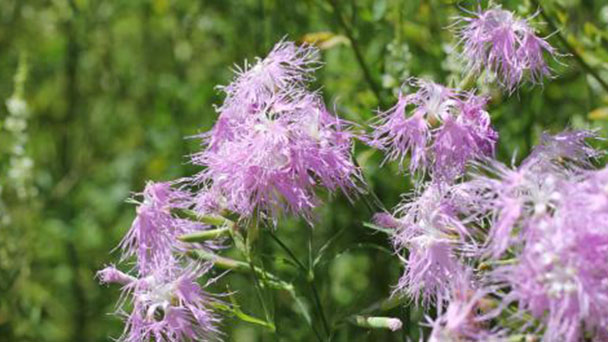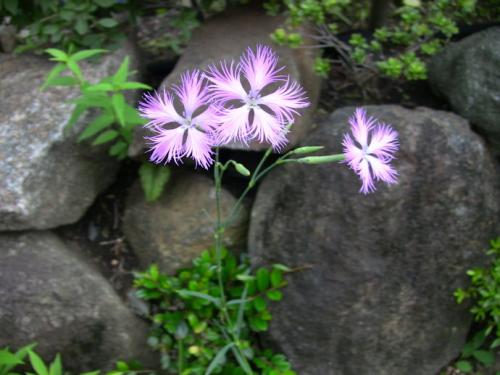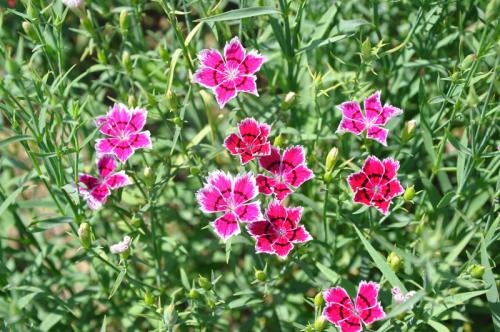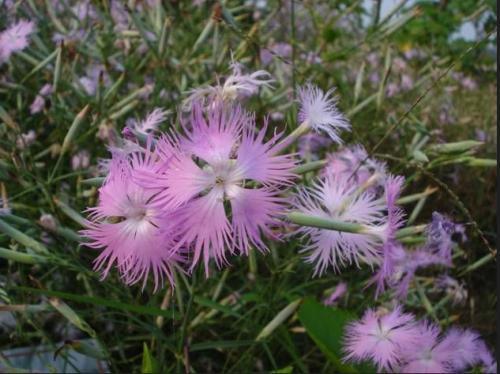How to grow and care for Fringed pink
Written by Maggie
Jan 19 2021

In the process of growing Fringed pink, the selected soil is mainly a mixture of garden soil, decayed compost and sandy soil. When we care for Fringed pink, the soil should be given sufficient sunlight, and in the summer, the temperature should be controlled at 15 ~ 22℃, and the soil should be kept moist frequently to avoid excessive watering, so as not to lead to root rotting. The following are Fringed pink care when we grow it.

1. Matrix care for growing Fringed pink
Fringed pink roots are more developed, has a high requirement on the soil, suitable for fertile osteoporosis and grown in sandy soil, rich in a calcareous family pot can choose orchard soil five copies of 2 and 2 copies of finished compost, sand mixed soil as cultivating soil, basin in pelvic floor mat before some rubble and bone matrix as a filter layer.
2. Sunshine care for growing Fringed pink
Fringed pink like grow in a sunny environment, but the light point-blank, in summer mainly accept scattered light, high temperature when the shade must carry on the processing, but also the surrounding ground spraying water mist. To reduce temperature, the temperature is best controlled in about 15 ~ 22 ℃. It should be in a greenhouse in winter, control temperature in more than 12 ℃.
3. Watering care for growing Fringed pink
Water requirement is very important when we care for Fringed pink. During the growing period, it is necessary to keep the soil moist frequently, water it every morning and evening during spring and summer, keep the air humidity at about 80% in summer, and gradually control the watering after autumn. If the watering is too much, it is easy to have the phenomenon of the rotting root.
4. Fertilizing care for growing Fringed pink
The Fringed pink is a perennial herbarium, which has a high requirement for fertilizing. When the plant is planted in the pot, it should be subject to a ripening compost solution once in time. At the early stage, it should be subject to proper weeding by loosening the soil and combining with fertilizing, mainly with ripening liquid fertilizer, and then applying thin phosphate and potash fertilizer once a month.

5. Fringed pink care for diseases and pest control
1. Root rot
The fringed pink is liable to the Fringed disease if it is not properly fed with water and fertilizer in the spring conservation process, and its roots will rot gradually. At this time, the infected Fringed should be cut off, and the roots and soil should be disinfected with carbendazim, and the plant should be potted again for conservation.
2. Smut
Fringed pink seed propagation by seed normally, but if you don't have to seed disinfection treatment, the plant will easily suffer from smut, affect the growth of the plants in the soil. When we care for Fringed pink, we need to give the plants will be treated as part of the disease, and also to its disinfectant sterilization at ordinary times, each time to sow first need carbendazim disinfection treatment.
3. Nutritional
Fringed pink is also vulnerable to the harm of green insects. The roots, branches and leaves of the plant will be eaten, and the excreta secreted by it will cause disease. Therefore, it is necessary to replace it with new soil immediately, and ventilation management should be enhanced, and the plant should be dosed with chloride cream and other drugs for prevention and control.
4. Aphids
Whenever the Fringed pink is affected by the aphid, the plant will suffer from poor growth, which will affect the normal growth of the plant and may even result in its failure to blossom. The plant can be artificially treated with toothpicks and water, and surrounding weeds should be treated to reduce the damage of aphid. In addition, the plant should be sprayed with insecticides such as Polarimide Emulsions to prevent aphids.

Latest Updated
- Benefits of Bugleweed - 7 Science-backed Health Benefits
- Bugleweed Dangers & Side Effects - Is It Poisonous?
- How to Plant Evergreen Trees - What You Should Know
- When to Plant Evergreens - Grow Guide for Evergreen Trees
- 12 Wonderful Evergreen Shrubs for Your Garden
- 12 Popular Evergreen Plants with Pictures for Beginners
- When And How To Prune A Lilac Bush Like a Pro
- How to Grow & Care for Lilac Vine (Hardenbergia Violacea)
- Japanese Lilac Tree (Syringa Reticulata) Care & Propagation Guide
- Shumard Oak Pros and Cons - What to Know
Popular Articles
- Winter maintenance of Antirrhinum Majus
- How to Grow Terminalia Mantaly Tree
- How to Grow and Care for Crossostephium Chinense
- How to grow Antirrhinum Majus in spring
- Peristeria Elata (Dove Orchid) Profile: Info & Care Guide
- Underwatered Snake Plant (Sansevieria Trifasciata) - Signs And How To Fix
- How to Care for Brazilian Jasmine Plant (Mandevilla Sanderi)
- How to Grow & Care for Graptopetalum Purple Delight in Summer
- Rosa Chinensis (China Rose): Plant Growing & Care Tips
- How to Care for Baby Sun Rose (Aptenia Cordifolia)